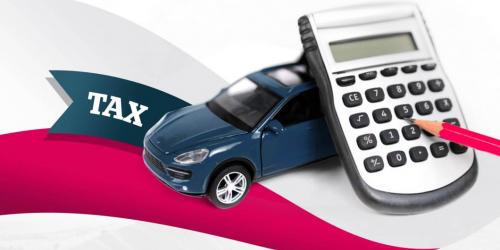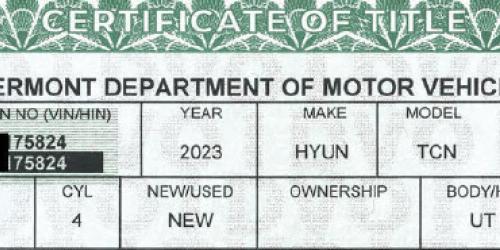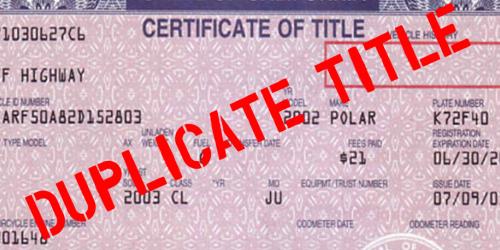A Vehicle Identification Number (VIN) is the identifying code for a specific automobile. A VIN comprises 17 characters (numbers and letters) that act as a unique identifier for the vehicle. A VIN displays the car's unique features, specifications, and manufacturer.
A Hull Identification Number (HIN) is a 12 or 14-character serial number uniquely identifying a motorboat or vessel.
VIN verification is not required when a title is not issued. See title requirements for vehicles or off-road vehicles for more details on title requirements.
When Verification is Required
- Vehicles with Salvage Documentation.
- Vehicles that are being titled under bond.
- Vehicles with registrations from any foreign country, including Canada.
VIN Verifications must be completed in Vermont
VIN verifications conducted in Vermont are to be completed by a Vermont law enforcement officer, personnel employed by a law enforcement unit who, for this purpose, are under the direct supervision of a law enforcement officer, or DMV employees designated by the Vermont Commissioner of Motor Vehicles.
Exceptions
For all VIN verifications involving U.S. Servicemen or Vermont residents in which a physical examination of the vehicle cannot be completed by the Vermont Law Enforcement or Vermont DMV, the Chief Inspector's office may authorize the VIN verification to be performed by other agencies or persons acceptable to the Chief Inspector's office.
Vehicles with discrepancies in documentation or which do not conform to established standards may be required to have a VIN verification performed under terms and conditions as prescribed by and at the discretion of the Vermont DMV Chief Inspector's office.
National Highway Traffic Safety Administration (NHTSA) VIN Decoder
The National Highway Traffic Safety Administration's website offers two free VIN check tools that allow you to either decode your VIN or check for a recall.
VIN Facts
The first group of three numbers and letters in a VIN make up the world manufacturer identifier (WMI).
-
For example, cars made in the U.S. start with 1, 4, or 5. Canada is 2, and Mexico is 3. Japan is J.
The following six digits are the vehicle descriptor section.
-
These numbers describe the car and include the model, body type, transmission type, engine code, etc.
The following eight characters are the vehicle identifier section.
-
This includes the model year and where the vehicle was assembled.
Character 12-17
-
The final six digits indicate the sequence number of the vehicle.



